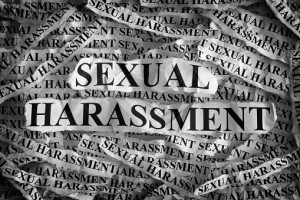 Roger Ailes became the CEO of Fox News in October of 1996. Almost 20 years later, he resigned from that position after being named in a sexual harassment lawsuit by TV personality Gretchen Carlson, who alleged “that he had sabotaged her career in retaliation for rebuffing his sexual advances and complaining about a hostile work environment,” according to the Los Angeles Times. Multiple women have since come to make similar claims, as did Megyn Kelly, one of the channel’s most popular hosts.
Roger Ailes became the CEO of Fox News in October of 1996. Almost 20 years later, he resigned from that position after being named in a sexual harassment lawsuit by TV personality Gretchen Carlson, who alleged “that he had sabotaged her career in retaliation for rebuffing his sexual advances and complaining about a hostile work environment,” according to the Los Angeles Times. Multiple women have since come to make similar claims, as did Megyn Kelly, one of the channel’s most popular hosts.
Roger Ailes was one of the most powerful men in television; two of the women who accused him of harassment are well-known celebrities with power of their own. What this story shows us, perhaps more than anything, is that sexual harassment can affect anyone at any time. It is not limited to people who have entry-level jobs, or to specific types of industries: it is endemic, and it is a problem.
When these acts occur in a work environment, or are committed by a fellow employee, a supervisor/manager or an executive, the person who is harassing you is in violation of federal laws “when [fusion_builder_container hundred_percent=”yes” overflow=”visible”][fusion_builder_row][fusion_builder_column type=”1_1″ background_position=”left top” background_color=”” border_size=”” border_color=”” border_style=”solid” spacing=”yes” background_image=”” background_repeat=”no-repeat” padding=”” margin_top=”0px” margin_bottom=”0px” class=”” id=”” animation_type=”” animation_speed=”0.3″ animation_direction=”left” hide_on_mobile=”no” center_content=”no” min_height=”none”][such acts are] so frequent or severe that it creates a hostile or offensive work environment or when it results in an adverse employment decision (such as the victim being fired or demoted);” this is the claim made by Gretchen Carlson against Roger Ailes – the claim that many women from Ailes’s past, it seems, are coming forth to support.
Putting an end to sexual harassment
Sexual harassment is notoriously underreported, because fear of reprisal is often stronger than a person’s need for justice. We understand: when you believe that your job and your future are on the line, it may feel easier to simply let the harassment continue rather than make waves and risk your position. But you have rights and protections under the law to protect you from retaliatory actions, and you do not need to suffer in silence because you are afraid. There are steps you can take to protect yourself from the outset:
- Read your company’s policy on harassment. If you have questions about what constitutes harassment, or if the policy is in any way unclear, make an appointment with your H.R. manager to discuss it. Do not be afraid to take notes during the meeting.
- See something, say something. If a person is harassing you at work, or treating you in an unfair manner, speak up. Be clear that you feel offended by the comments. It if persists, file a report with the H.R. manager. Make sure to obtain a copy of that report for yourself.
- Keep records of communication. If the harassment comes in the form of emails, tweets, voicemails – anything that can be recorded and captured through legal channels – keep copies of those communications. If the harassment is verbal, keep a diary to write down exactly what was said to you, when and by whom.
- Seek legal counsel. If you have been a victim of sexual harassment, or believe you have been wrongfully terminated from your job because of it, you should seek the advice of a skilled employee rights attorney.
Sexual harassment occurs at all levels of every industry in this country. It is up to all of us to put an end to it by taking action. At the Gilbert Firm, we uphold the rights of sexual harassment victims in courtrooms throughout Tennessee. To schedule a consultation with a Tennessee employee rights attorney like Justin Gilbert, Jonathan Bobbitt or Michael Russell, please call 888.996.9731 or fill out our contact form. We maintain offices in Nashville, Chattanooga, Memphis, Jackson and Knoxville for your convenience.[/fusion_builder_column][/fusion_builder_row][/fusion_builder_container]
 Every single woman you know has been sexually harassed at some point in her life. It doesn’t always happen at work. It doesn’t always happen in school. It doesn’t always happen at parties, or in clubs, or while she’s walking to work, or purchasing fruit at the local grocery store, or doing things online, or simply sitting quietly somewhere in public. But it happens every single day, and every woman you know has been a victim of it at some point or another.
Every single woman you know has been sexually harassed at some point in her life. It doesn’t always happen at work. It doesn’t always happen in school. It doesn’t always happen at parties, or in clubs, or while she’s walking to work, or purchasing fruit at the local grocery store, or doing things online, or simply sitting quietly somewhere in public. But it happens every single day, and every woman you know has been a victim of it at some point or another.